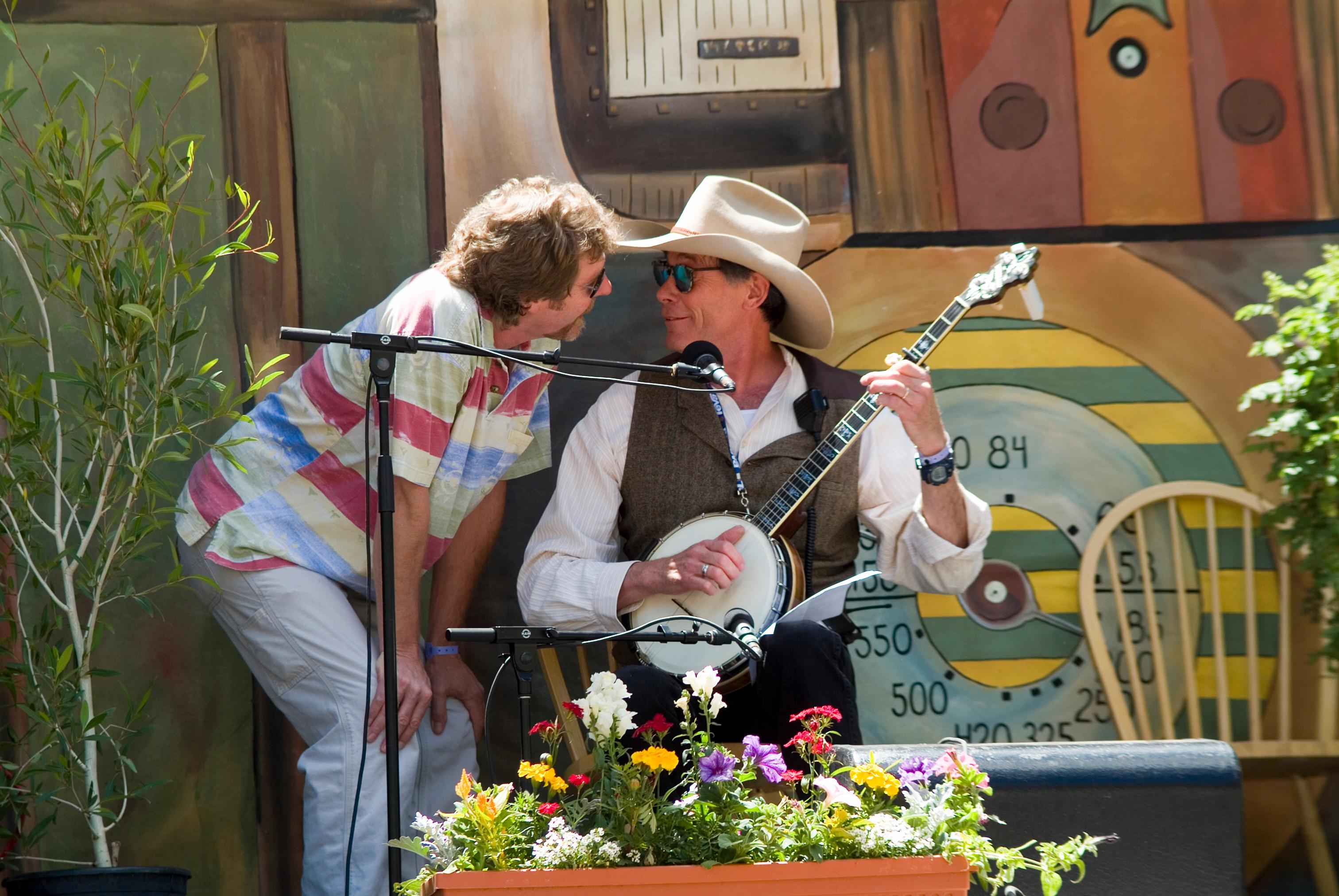In 1974, $2 could get you full access to the Telluride Bluegrass Festival, a one-day event featuring music from artists like the Denver Bluegrass Band, the Fall Creek Boys and the Black Canyon Gang.
Founded by the Fall Creek Boys’ four members -- Fred Shellman, Kooster McAllister, John “Picker” Herndon and J.B. Matteoti -- the Festival attracted a small gathering of musicians and music lovers to the San Juan Mountains in southwestern Colorado in its early days.
Now, the Telluride Bluegrass Festival is a mainstay for the mountain town and, over the years, has hosted some of bluegrass and country music’s most notable figures, including New Grass Revival, James Taylor, Johnny Cash, Mary Chapin Carpenter, Shawn Colvin and Bela Fleck.
To commemorate the festival’s long history, Planet Bluegrass, the Lyons-based production company responsible for the Telluride festival and other renowned Colorado music celebrations like the Rockygrass roots music festival in Lyons, is releasing a limited-edition collector’s book.
“Telluride Bluegrass Festival: 40 Years of Festivation” debuts Thursday, as the 41st annual Festival gets underway.
The book features essays from musicians and photographs.
It also catalogs the 40 colorful posters used to advertise the Festival through original artwork throughout its history.
Since 1984, Colorado watercolorist William Matthews has been responsible for designing the posters. The Festival organizers don't have a record of the poster artists who preceded Matthews.

Aspen-based disc jockey and guitarist Dan Sadowski, better known by festival regulars as Pastor Mustard, has been the festival’s emcee since 1978. He is also the author of the 216-page book, which includes year-by-year accounts reflective of his tongue-in-cheek wit and deep connection with the Festival.
The posters in our slideshow, above, are some of Sadowski’s favorites. Sadowski chatted with CPR about the personal and historical significance of his selections.
1975
Sadowski was first introduced to the festival in 1975 when Fall Creek Boys member Shellman invited Sadowski’s band, Ophelia Swing Band, to play in the Festival.
“Fred was like a brother from the beginning” Sadowski says. "He invited us down to Telluride, and it seemed like another world down there because none of us had been before.”
Ophelia Swing Band joined the lineup for the second annual Telluride Bluegrass Festival along with bluegrass dignitaries Sam Bush and the New Grass Revival.
The green psychedelic poster commissioned by the Telluride Bluegrass Festival, Inc. in 1975 contrasts with the rough-hewn flyer crafted for the inaugural year. (Year one’s design included black lettering listing a few of the featured bands against a beige background.)
“I thought it was an iconic poster,” Sadowski says, comparing it to the trippy graphics utilized in rock n’ roll advertising at the time. “You could almost switch out the banjo for an electric guitar.”
Sadowski says he kept a copy of the poster for himself even though the graphic designer -- whose identity is unknown -- misspelled the name of his band as the “Ophilia Swing Band.”
1978
1978 marks the first year Sadowski stepped into his alter ego as master of ceremonies, Pastor Mustard. 1978 also marked the Festival debut of fiddle player Vassar Clements.
“All of a sudden we began to realize that something was going on here, that this was going to be something that would collect a head of steam,” Sadowski says. “It wasn’t just a lucky streak for a year or two.”
1984
Matthews’ designs first appear on the 1984 Telluride Bluegrass Festival poster. The image depicts an upright banjo fading into the San Juan Mountains. Matthews has since designed about 20 posters for the Festival, including the 40th anniversary poster.
Since 1984, the poster design has not included the names of artists featured at the Festival.
“Willy made a monumental decision in that he didn’t list any performers on the poster,” Sadowski says of Matthews' unorthodox design choice. “I think it was a conscious decision on his part. It says, ‘By now you should know there is nothing else like this.’”
1990
1990 was another landmark year, as it was the first time singer-songwriter James Taylor performed at the Festival.
Sadowski remembers Taylor as having a good sense of humor about things, even when the joke was at his expense.
“That year we started right off with James Taylor and I introduced him as James Brown to have a good chuckle,” the emcee says. “He took it well and I figured, let’s make him the godfather of soft rock.”
1993
The 20th anniversary poster from 1993 is a painting of the 1927 mandolin that belongs to Sam Bush. The instrument has accompanied Bush every year at the Festival since he first played there in 1975. The artist has been instrumental in the Festival’s growth.
“Anyone who plays bluegrass music is a little geeky about their instruments,” Sadowski says.
1995
A watercolor butterfly with a mandolin for its body is the focal point of Matthews' 1995 poster design.
That year's Festival lineup was memorable for its showing of high-profile bluegrass/alternative country music female vocalists.
Performers included Mary Chapin Carpenter, Shawn Colvin, Ani DiFranco and Emmylou Harris.
2002
Matthews’ 2002 poster is a painting of Bridal Veil Falls in Telluride with a shadow in the shape of a mandolin looming over it.
“In the book, I compare Willy’s posters with banjoist Bela Fleck,” Sadowski says. “When Bela comes to Telluride, he tries to outdo himself every year. Willy does that a little bit too with his posters.”
2013
The 2013 poster alludes to the festival’s early years. It depicts Bush strumming his mandolin through a hotel window.









